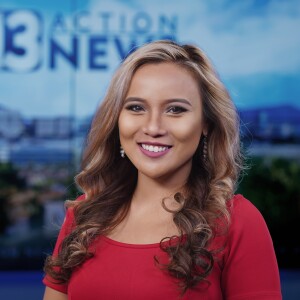LAS VEGAS (KTNV) — Reading a book can open up a whole new world of possibilities. That’s why 13 Action News is proud to be a part of our company literacy campaign called "If You Give a Child a Book..." Through Sept. 30, we’re doing a series about the importance of literacy in our community.
When you open a book, you’re opening doors to another world.
The pages can take you to a different period, an unfamiliar place or introduce you to another culture.
Rebecca Colbert is the head of the collection and bibliographic services for the Las Vegas-Clark County Library District. As a former teacher, she understands the importance of representation in literary pieces.
RELATED: Resources available for children behind on reading
"When [kids] pick up a book, we're trying to engage them in storytelling," Colbert explained. "And one of the ways to do that is to have things that look like them."
"But just as important, kids who maybe are not multicultural and were born here in the U.S. and have never thought about this concept," she added, "[they] need to read stories that look like their classrooms and the kids and their neighborhoods."
The library district works with local schools to make sure books on teachers' reading lists are not dated and showcase different points of view.
Colbert says to bridge cultural gaps in diverse metropolitan areas like Las Vegas, kids must be exposed to multicultural books at a young age.
"What I might do in storytime, or if I was teaching a class," she said gesturing to a book, "I might have [the book] 'Mango, Abuela and Me' and I might use it as a jumping-off point to insert nonfiction facts and talk about Latin America."
Colbert says normalizing diverse characters can breed acceptance and understanding of different cultures.
Using the book "Ada Twist Scientist" as an example, Colbert said:
"Ada is just your everyday average elementary school girl who likes to mess around with science. The fact that she is also Black is a complete bonus.
It doesn't become the story, it's just part of it.
So if you read this as a child you think, 'Yeah absolutely! Women scientists - a good thing. African American women scientist, better.'"
Children's book author Nadine Haruni says parents should also start creating space to talk about race and culture at home.
One of her children’s books, "Freeda the Frog and Her New Blue Family" teaches this lesson:
"It doesn’t matter what color your skin is or what you look like on the outside. We’re all just frogs on the inside."
Haruni's own multiracial blended family’s experience helped shape the book, she says.
"I was aware that occasionally we get looks," said Haruni. "Not necessarily in a bad way but just when I would say, ‘These are my daughters.'"
She adds, "I think the parent's job is to raise their kids to be open-minded and accepting of many different types of people, and to just kind of bring conversations out there and make them no big deal."
The Freeda the Frog series is available online and is also accessible through virtual storytime.
RELATED: Clark County Library District tackling adult literacy
The library district also offers its collections online. On its website are readings tackling issues from the Black, Hispanic, and LGBTQ points of view, just to name a few.
"[The books] can make connections that are really hard to make right now in this distance education world," said Colbert.




